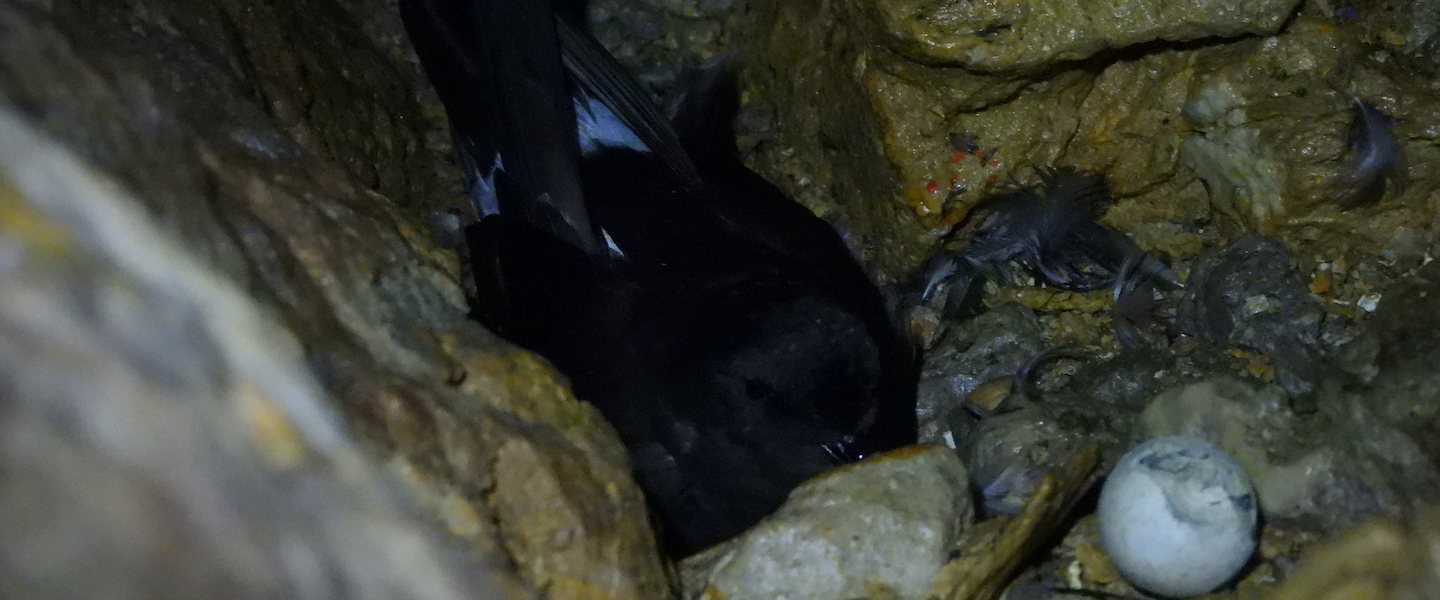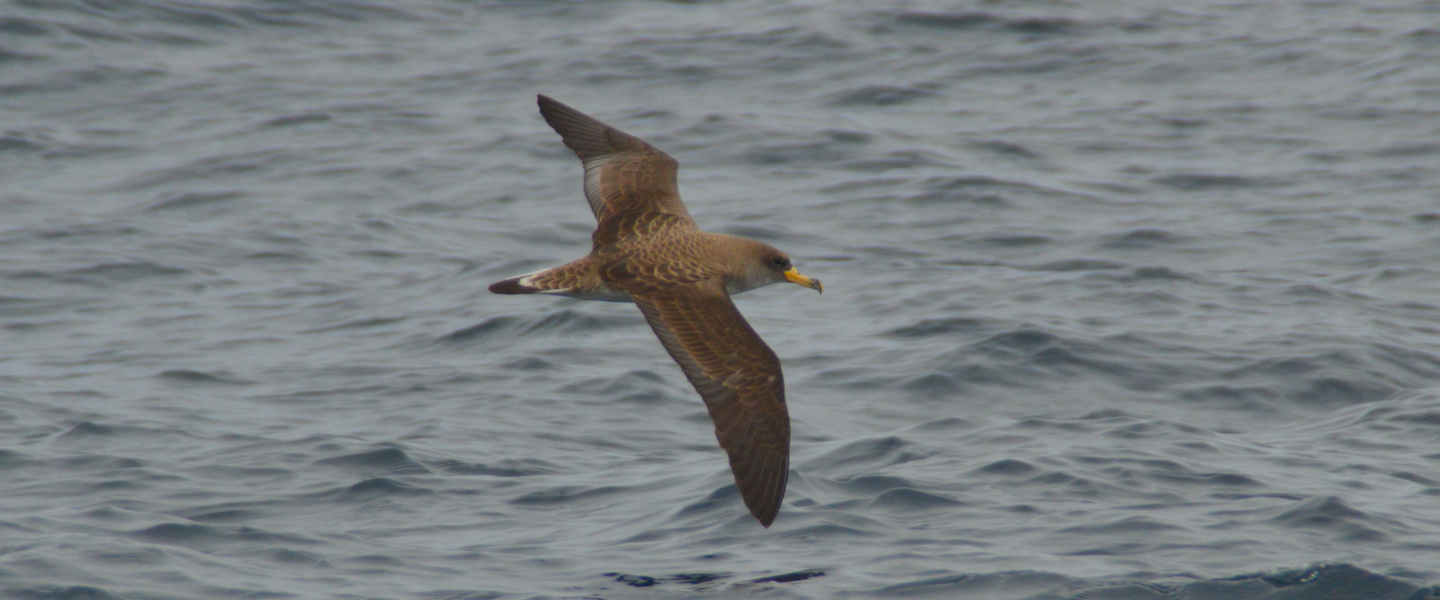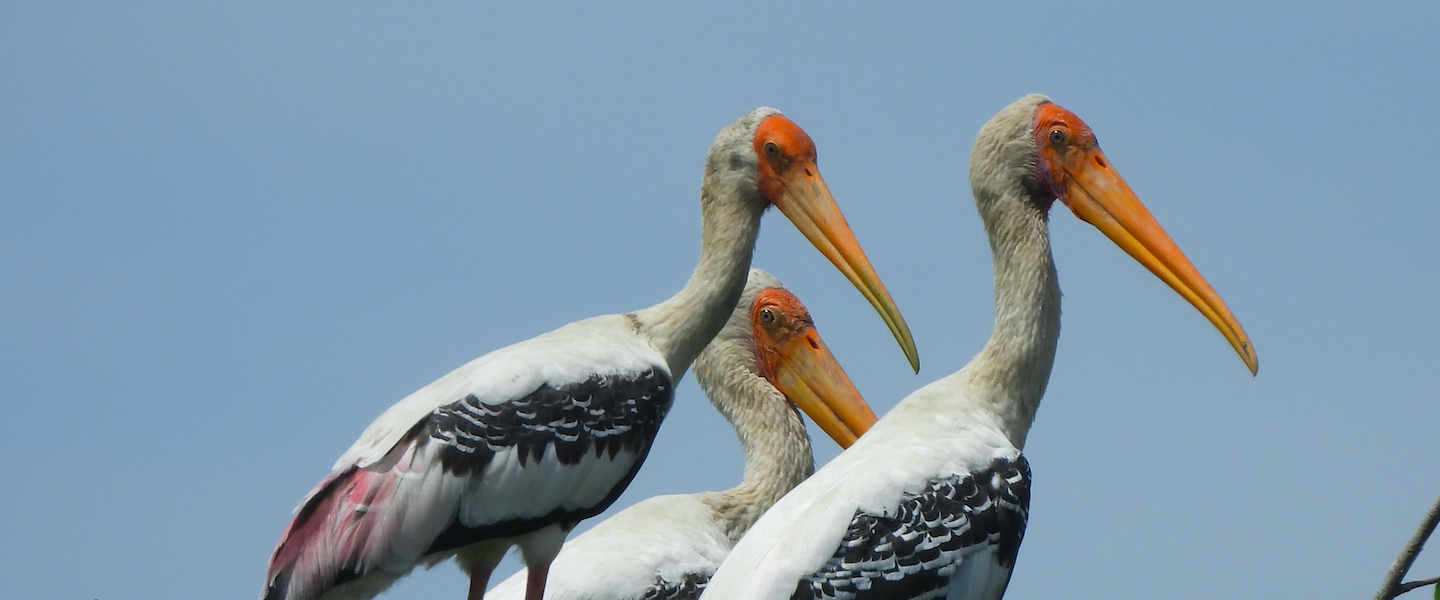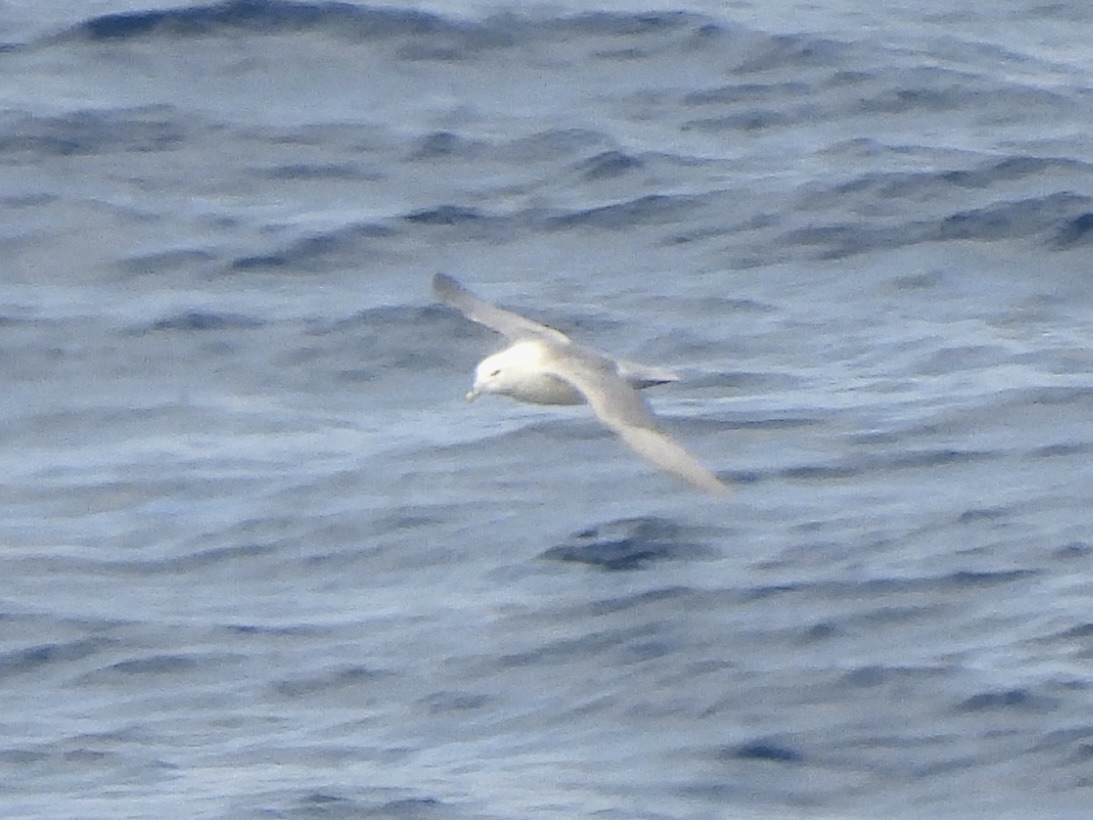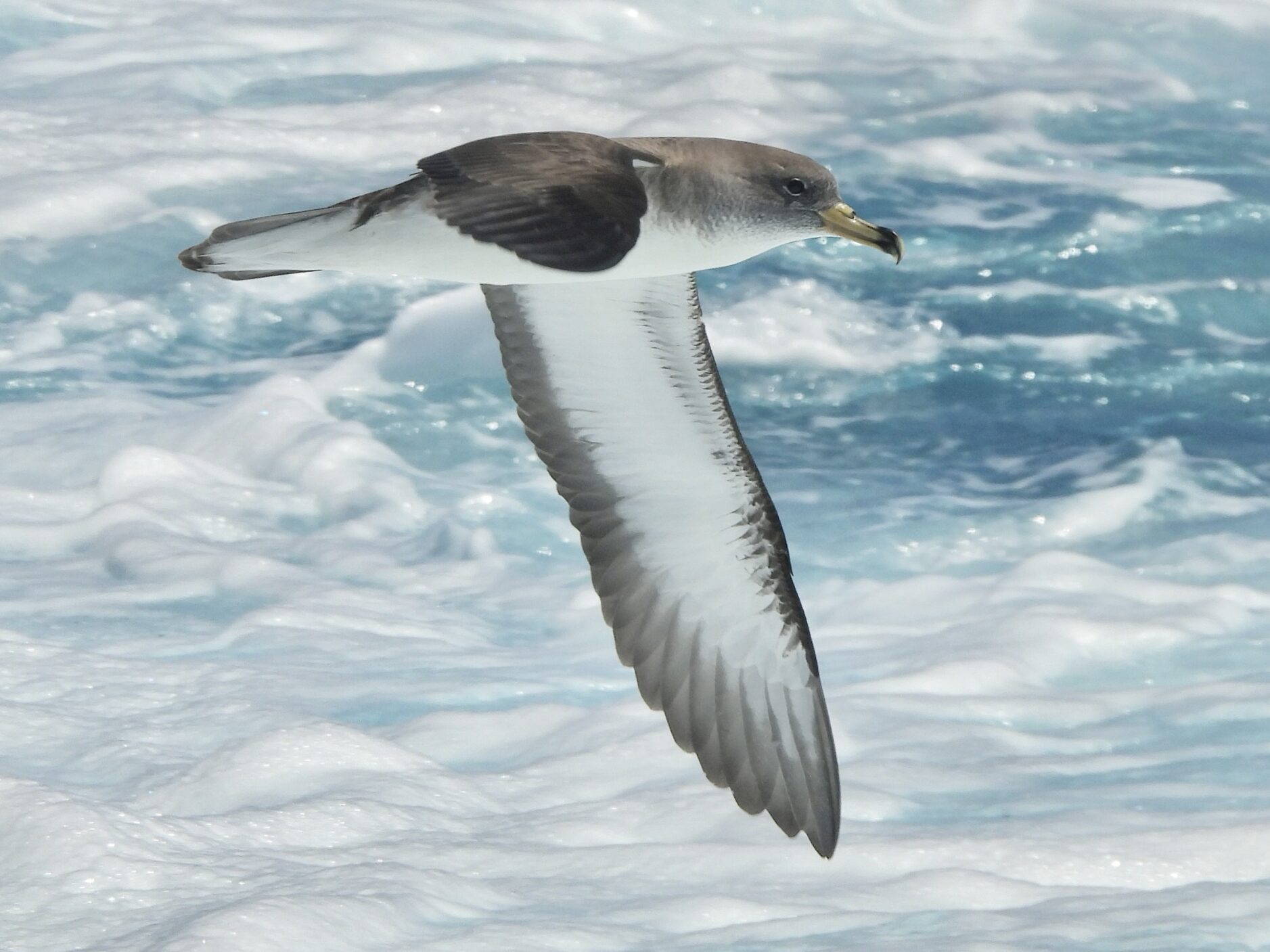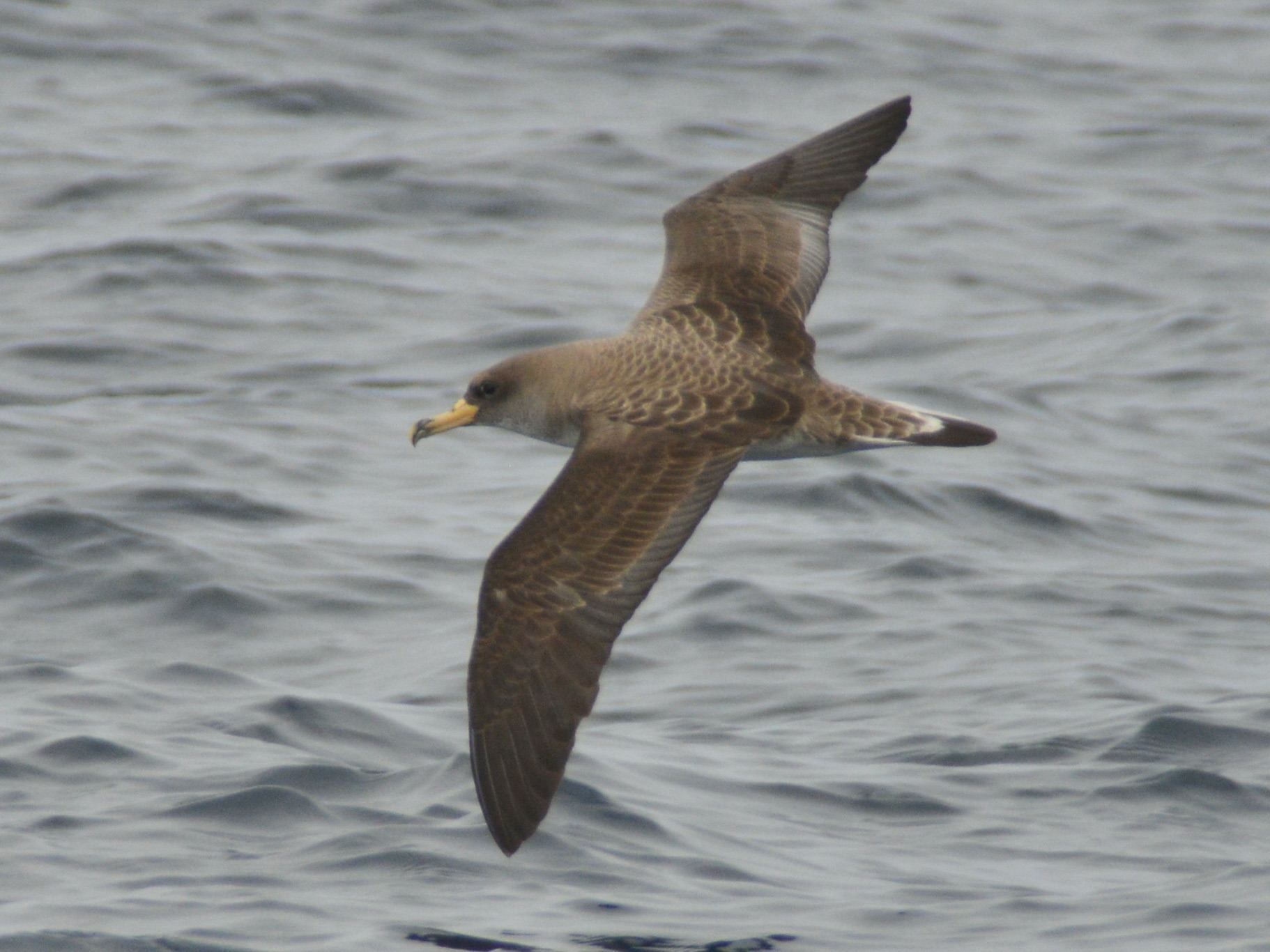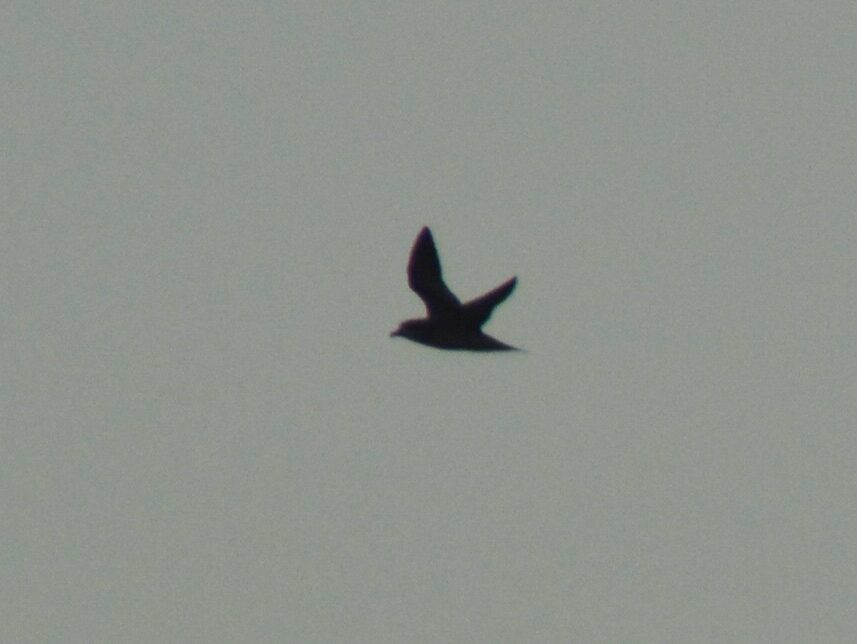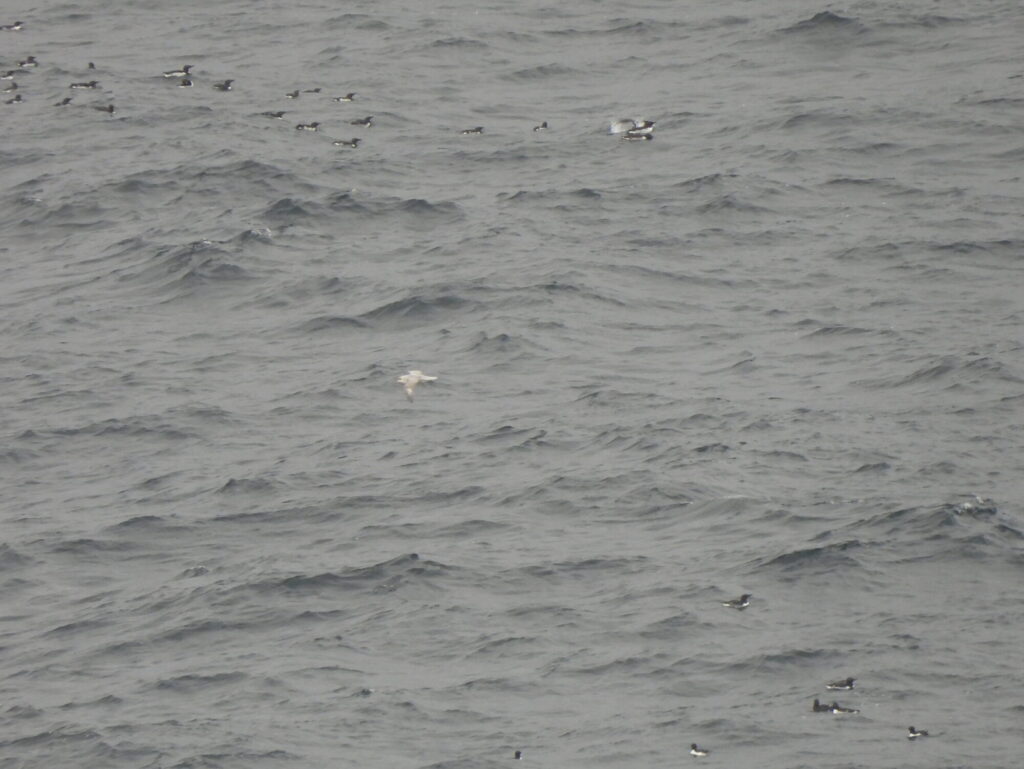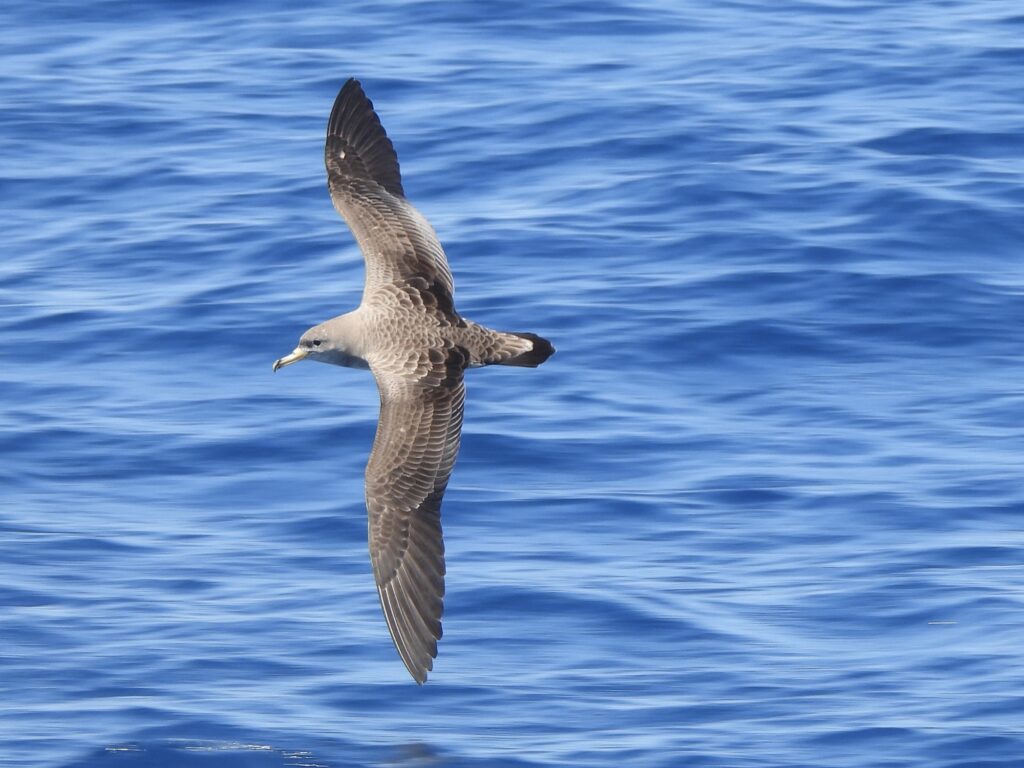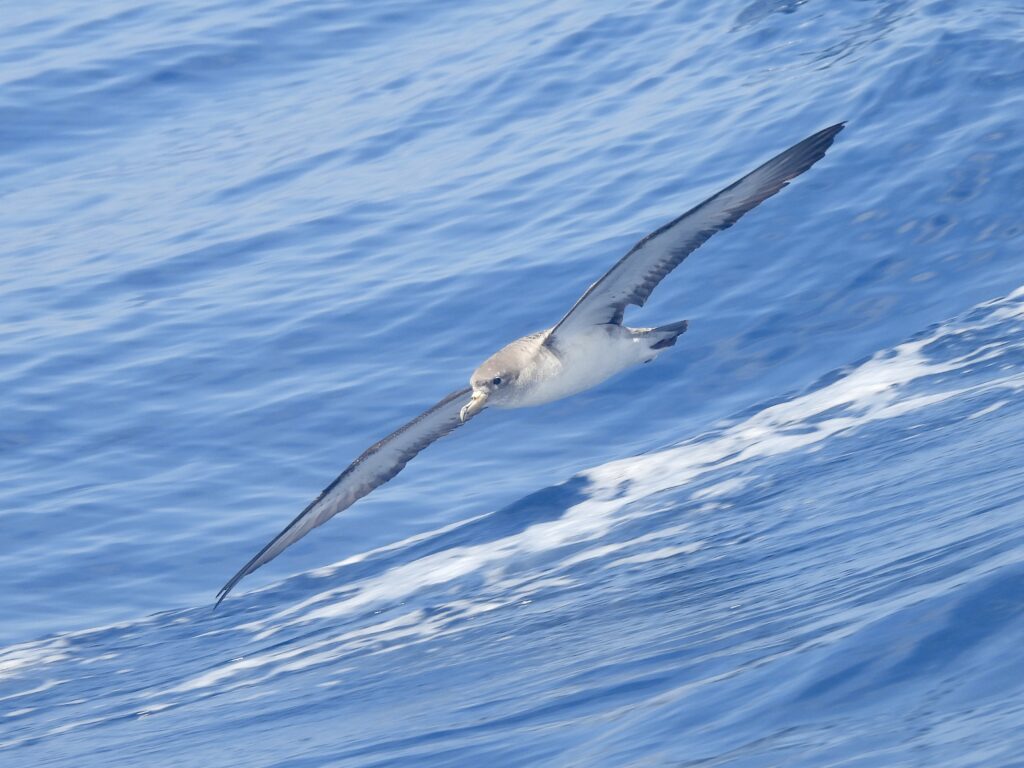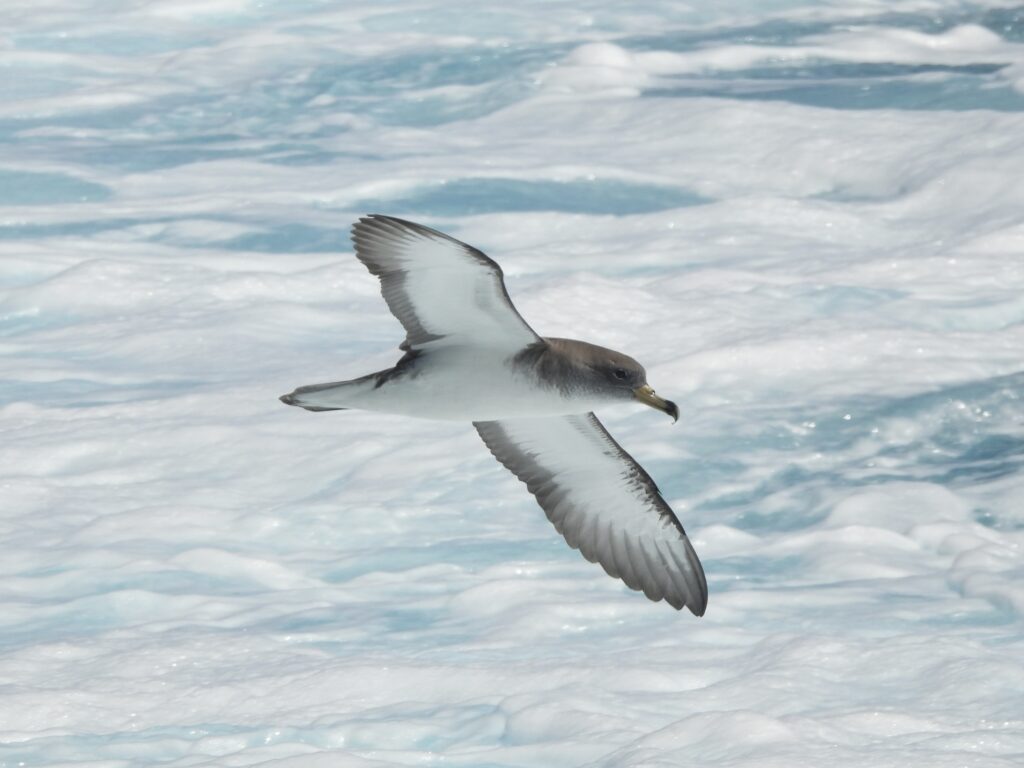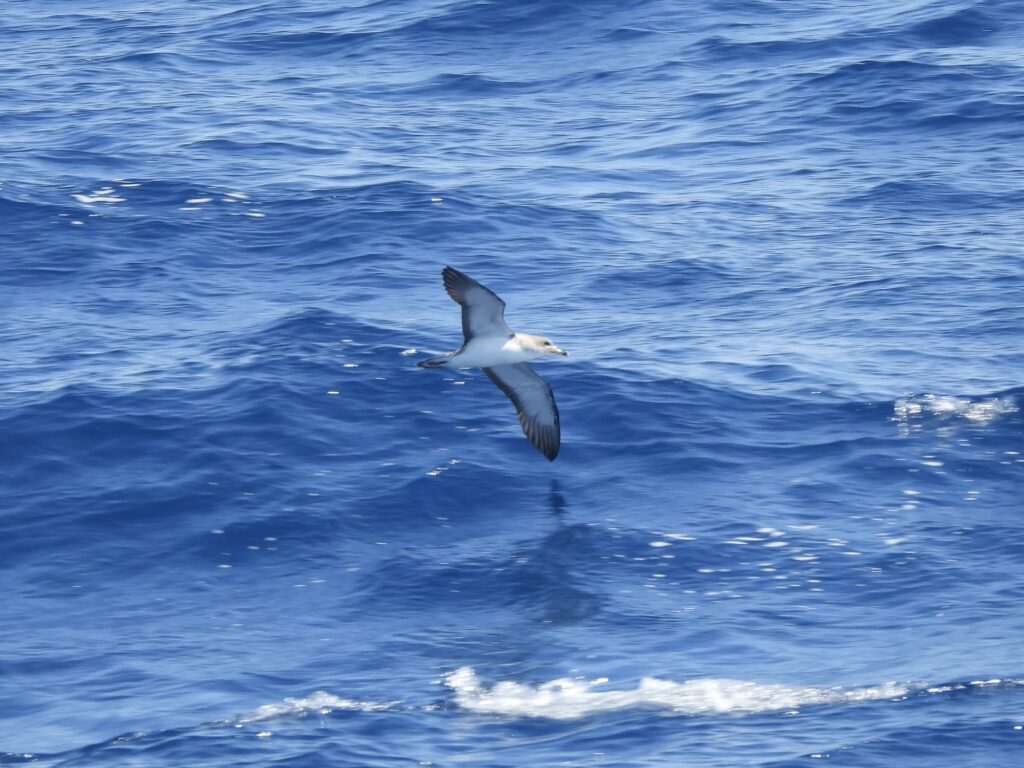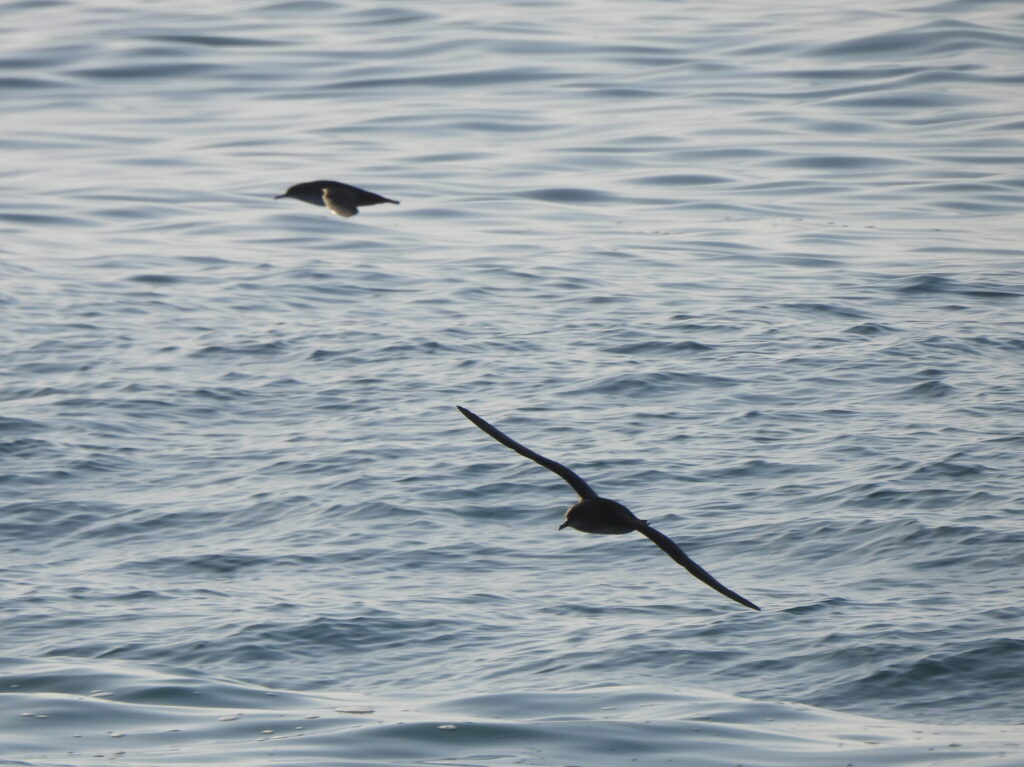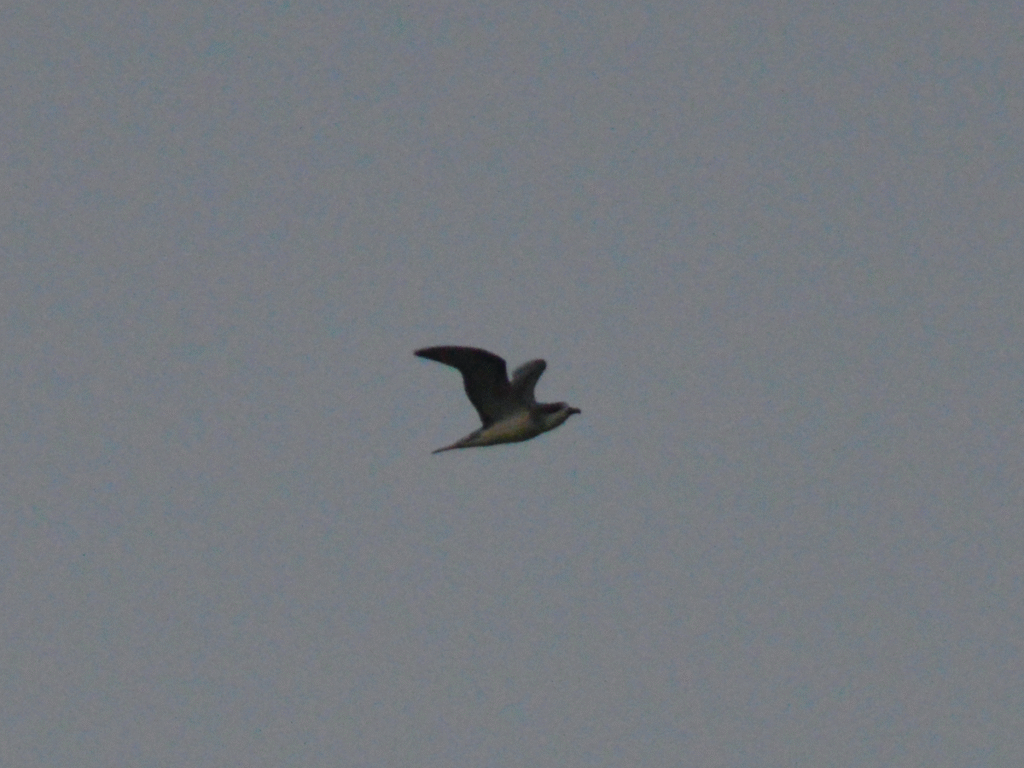The shearwaters and petrels (family Procellariidae) are a family of birds belonging to the order Procellariformes, often regarded as tubenoses. This large and diverse group of birds is adapted to life in the pelagic zone, foraging across all oceans and seas and feeding on fish, squids, crustaceans and carrion. Some species congregate and follow cetaceans and fishing boats to do so. All species breed in colonies and usually show a strong philopatry and habitat selection for breeding sites throughout their particularly long lives, in most cases on islands or islets close to the sea, often in caves or self-made burrows, but for some species up to 400 km away from the sea. Because these species are clumsy on land, a commonality of breeding grounds is that they must allow for take off and be free of land predators. Therefore, seabirds are particularly sensitive to the introduction of alien predators.
The family comprises 98 species in 16 genera. The basal genera Pagodroma (1 species), Thalassoica (1 species), Daption (1 species), the giant petrels of genus Macronectes (2 species) and the fulmars of genus Fulmarus (2 species) conform the fulmarine petrels, which are mostly restricted to polar regions, especially around the Antarctica. Genera Bulweria (2 species) and Pseudobulweria (4 species) show a tropical distribution. Genus Procellaria (5 species) forages in cold water currents. Shearwaters belong to genera Calonectris (4 species), Ardenna (7 species) and Puffinus (20 species) and are distributed in all seas and oceans. Diving petrels of genus Pelecanoides (4 species) are found in southern latitudes. Genus Halobaena (1 species) is closely related to prions, genus Pachyptila (7 species), all found in the Antarctic Ocean. Subantarctic genus Aphrodroma (1 species) is closely related to the gadfly petrels of genus Pterodroma (34 species), widespread across tropical and subtropical seas. The phylogeny of several taxa is still unsolved and the status conservation of numerous species is hampered by longline fishing and impacts on their breeding grounds, with several taxa at the brink of extinction and one species possibly extinct.
Northern fulmar
Fulmarus glacialis
Breeds in colonies on offshore islands of cold and temperate regions around the Arctic and Subarctic, and is the only fulmarine petrel present in the northern hemisphere. There are two morphs: birds from lower latitudes are bright white whereas those closer to the Arctic show the grayish ‘blue’ morph. I have seen this species off at sea in Galicia (N Spain) and in Lapland.
Scopoli’s shearwater
Calonectris diomedea
Breeds in caves of islets in the Mediterranean sea over boreal summer and forage around the tropical eastern Atlantic in winter. It used to be considered conspecific with Cory’s, but they differ in morphology, genetics, calls and distribution range. Although no breeding colonies are known in the region, the species is an abundant summer visitor in Alicante.
Cory’s shearwater
Calonectris borealis
Breeds in colonies in the Macaronesian archipelago, including Azores, Madeira and Canary Islands, the Berlengas just off Portugal and the Chafarinas at the very entrance of the Mediterranean sea, but spends the non-breeding months in the Benguela and Agulhas currents in southern Africa. Their local names in the islands they breed on often refers to their haunting calls close to their breeding sites. I have seen this uncommon visitor in Alicante, but enjoyed best looks in Galicia (N Spain) and Azores.
Manx shearwater
Puffinus puffinus
Breeds in islands of northern Europe from Iceland to France and mainly around the British Isles, in Macaronesia and since recent times also in northeastern North America. Their complex migration route has a core wintering area off the coasts of Argentina and Brazil. I have seen numbers of this species in migration in Galicia (N Spain).
Mediterranean shearwater
Puffinus yelkouan
Endemic to the Mediterranean, their name yelkouan is Turkish for ‘wind chaser’. Two forms have long been considered separate species: the nominate, white-bellied yelkouan breeds in central and eastern Mediterranean and rarely ventures out of the sea while the ‘Balearic‘ mauretanicus breeds exclusively on the archipelago, winters out in the Atlantic Ocean and is critically endangered. The latest form is however abundant in migration and during their breeding time foraging trips in Alicante.
Barau’s petrel
Pterodroma baraui
Formidable gadfly petrel known to breed at up to 2,700 m above sea level on the mountain tops of Reunion Island, where it is endemic. It forages around the Indian Ocean out of the breeding period, from southern Africa to Australia, although an individual was recorded in mainland France on 2024. It was only discovered to western science and formally described in 1964 and is currently endangered. I have seen different individuals flying up their breeding grounds up in the volcanos of Reunion.

